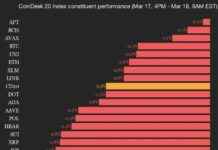The Markets in Crypto-Assets Regulation (MiCA) is a significant development in the European Union’s efforts to regulate the fast-growing crypto market. With key dates approaching, such as the application of stablecoin provisions by June 30, 2024, and the full implementation of MiCA by December 30, 2024, the crypto industry is undergoing a period of transformation.
MiCA’s phased timelines and transitional periods until June 30, 2026, mean that implementation will vary across EU and EEA jurisdictions. Some countries, like Ireland, Spain, and Germany, will offer a 12-month transitional period, while others, such as France and Lithuania, will have longer or shorter periods. This transition phase may lead to market consolidation as not all service providers will obtain MiCA licenses, prompting some to cease operations.
There is now a race among EU/EEA jurisdictions to become the primary hub for crypto activities, with countries like France, Malta, and Ireland competing for the top spot. However, challenges remain in terms of regulator readiness and compliance for crypto businesses. Regulators need to upskill their staff to process MiCA applications, especially in jurisdictions with high applicant volumes. The complexity of different business models and products unfamiliar to regulators adds to the challenge, highlighting the need for significant training efforts.
Adapting to MiCA and related regulations will be a challenge for many entities, requiring substantial investments in technological infrastructure. The Travel Rule, which mandates the sharing of information between Virtual Asset Service Providers (VASPs) with each crypto transaction, adds another layer of complexity. This rule requires the transfer of a significant amount of information about the transaction originator, emphasizing the need for harmonization and solutions compliant with the Travel Rule while protecting user privacy.
Despite the challenges, MiCA aims to enhance regulatory oversight, investor protection, and mainstream institutional participation in the EU. Measures for consumer protection will help mitigate risks like fraud and hacking, building trust among retail clients. Additionally, MiCA’s reporting requirements will provide regulators with more data to monitor market activities effectively and enable cross-border operations.
Looking ahead, MiCA’s gaps in regulating emerging areas like decentralized finance (DeFi), lending, and non-fungible tokens (NFTs) will require ongoing policy discussions and further regulatory measures. Reports on these aspects may lead to a second iteration of MiCA or supplementary measures in the future.
In conclusion, MiCA signals a new era of regulation in the crypto market, aiming to balance innovation with investor protection and market integrity. While challenges persist, MiCA lays the groundwork for a transparent, secure, and inclusive crypto framework in the EU and globally. As the crypto landscape evolves, regulatory regimes must adapt to emerging trends and technologies to ensure sustainable growth and investor confidence.














